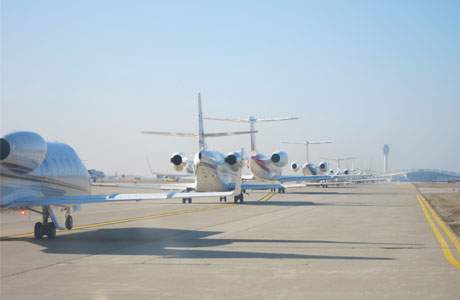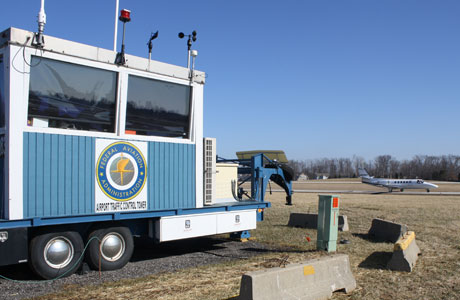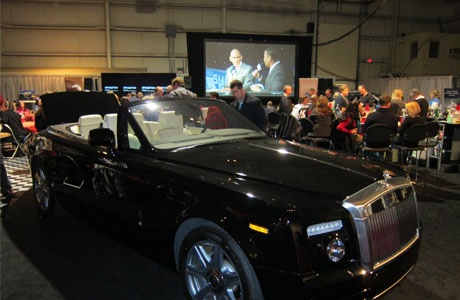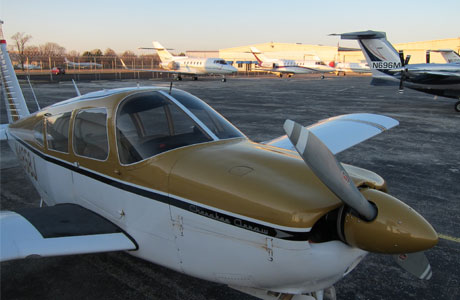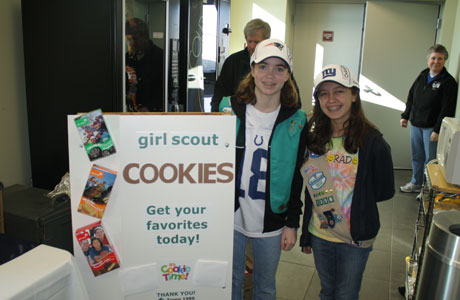“Milwaukee Departure, Arrow 4858 Juliet just off of Oshkosh climbing to 3,000 feet, heading 1-1-0.”
“Roger, 58 Juliet, cleared to 7,000. Proceed on course. Going to Indy? I hear they’re having a little game down there.”
“Really? We’re going to a craft show.”
My friend Fareed and I were flying my Piper Cherokee Arrow to Indianapolis on Super Bowl weekend. And we were headed to a craft show of sorts … an aircraft show.
In what several fixed-base operators called the “Biggest Day in Indiana Aviation History,” Indianapolis area airports had parking reservations for more than 1,100 private aircraft that flew in for Super Bowl XLVI, according to the Indiana Department of Transportation Aviation Division. That is nearly double the record 611 aircraft that flew into Dallas for last year’s Super Bowl, and the figure doesn’t include the hundreds of “quick turn” flights that dropped off passengers and came back after the game to pick them up.
I got the idea to fly my Arrow to Indy after receiving an email invitation from Signature Flight Support promoting the hangar party it was hosting during the game. Since the Giants, my favorite team, were in the game, I thought it would be fun to watch the Super Bowl in the same city in which it was being held.
I wasn’t able to get a reservation with Signature, but Million Air, the other FBO on the field, had space and also was having a party, sponsored by Bombardier. The two FBOs had 750 reservations between them.
I invited Fareed, a former corporate pilot and a CFII, to fly with me because I’m not instrument rated and wanted to be sure we could get in if the weather was bad. An added bonus was getting some instruction during the flight.
Departing Oshkosh, Wis., on Feb. 4, the weather was clear but conditions deteriorated once we were over Indiana; by the time we were near Ft. Wayne, it was solid instrument meteorological conditions. This made for great practical instruction—no foggles needed as I scanned the instruments. Fareed took over as we neared Indianapolis International, providing an opportunity for me to watch and listen to an actual ILS approach. We broke out of the clouds about 800 feet agl, lined up with Runway 5R, and touched down smoothly.
“Welcome to Indy. You’re the first piston we’ve seen all weekend,” the van driver said as he drove us across the ramp to Million Air’s welcome hangar, complete with a red carpet and enclosed canopy. Inside Felicia greeted us and took our aircraft information as we stood next to a black Rolls-Royce convertible on display in the middle of leather couches, tables, and chairs. In one corner was a racecar simulator promoting the city’s best-known sporting event. There was even a bar in the middle of the room and two 10-foot-high TV screens. We were treated just as if we had flown a G5.
One fan from Manhattan, flying in a chartered jet for the first time was astonished by the service. “I’ve never seen anything like this,” he said. “The setup is amazing.”
A regional effort
The reception wasn’t as elaborate at the other area airports, but the Hoosier hospitality was no less evident. At Eagle Creek, Greenwood Municipal, and Indianapolis Metropolitan, slow cookers with homemade chili sat on tables next to cookies and brownies made by local pilots. Indianapolis Executive had a small buffet in the terminal with food provided by local restaurants and shuttled pilots a few minutes down the road to its party at the Palomino Ballroom. Even the Girl Scouts were selling cookies at two of the airports.
Three airports—Eagle Creek, Indianapolis Executive, and Indianapolis Regional—had temporary towers to help manage the traffic. At Eagle Creek it was just a small shack on a trailer, which the controllers jokingly called the “popcorn stand.” The nickname seemed appropriate as a Piper Cub did touch and goes in between turboprops and Citations that were landing.
Approach control handed off aircraft when they were five to 10 minutes out, and the tower provided visual separation and landing clearance. For outbound flights, Indianapolis Departure released three aircraft at a time with two-minute separation between takeoffs, said Dave Swanson, a controller who came in from Chicago’s O’Hare International Airport to work at Eagle Creek.
Departure
Most of the aircraft were scheduled to depart Sunday night after the game. The temporary flight restriction closed the airspace in a 10-nautical-mile radius of Lucas Oil Stadium between 4:30 p.m. and 11:59 p.m. Feb. 5, although pilots at the Million Air party said the FAA usually grants exceptions to let aircraft depart early.
Fareed and I planned to leave Feb. 6, figuring we would avoid the backup of flights trying to get out on Indianapolis International’s parallel runways. While there may have been fewer departures, ramp control had its hands full marshaling aircraft from both FBOs and the de-icing ramp to the runway, as well as directing arriving aircraft to the ramp.
There were at least 20 aircraft in front of us trying to get in sequence for departure, most on Taxiway Hotel. Surprisingly, I saw a Cessna 172 on Taxiway Juliet. Apparently, we weren’t the only piston-engine aircraft that came in. Otherwise there was one King Air and lots of heavy metal departing. An hour and 13 minutes after we started up, we were at Runway 23R awaiting clearance for takeoff. The flight back to Oshkosh, flying to the west of Chicago to avoid the Class B airspace, took two hours and 40 minutes.
Flying to the Super Bowl was an experience I will never forget. Despite being the smallest aircraft on the field, we were treated with the same level of service customarily given to those flying in multi-million dollar aircraft. And we were expected to have the same knowledge and proficiency as the professional pilots. While it’s certainly possible to fly into one of these large events, you need to bring your “A” game.
